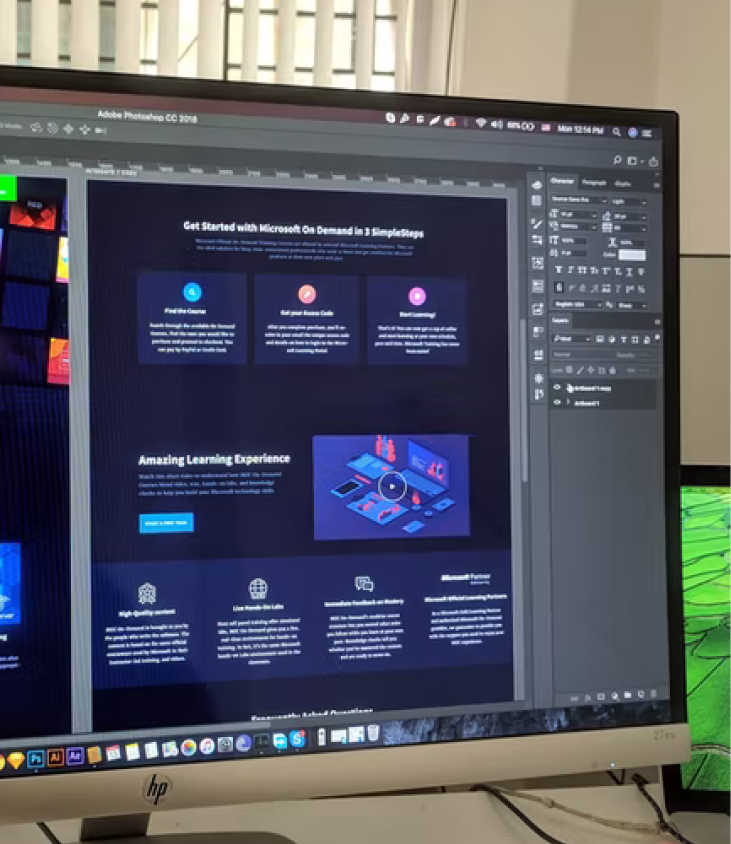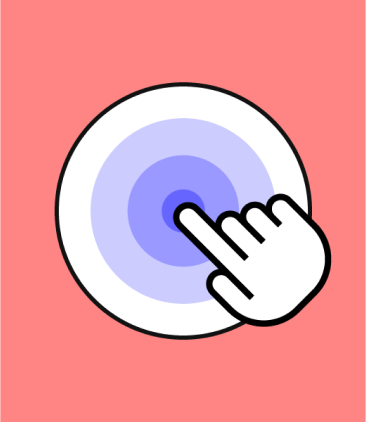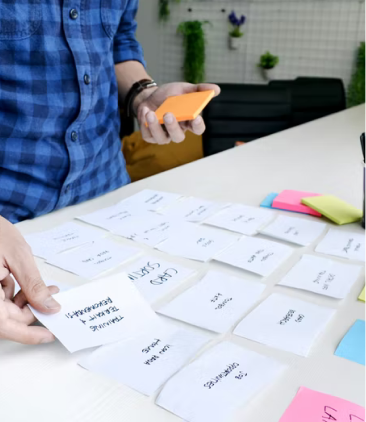Unlock the full potential of your enterprise apps
With user-friendly designs, we empower your employees to work smarter, resulting in increased productivity and improved customer service. Our enterprise UX services have helped clients achieve significant improvements in cost efficiency and productivity. Revamp your enterprise UX and experience the difference for yourself.
32%
Increase in revenue
35%
Increase in efficiency
23%
Less operational costs
50%
Decrease in training
Why invest in enterprise UI UX design services?
Most enterprise apps have complex UI, leading to low productivity and high cost of operation. Our services help you overcome such challenges and enjoy many benefits.
-
Higher productivity
Boost employee productivity by simplifying complex UI/UX workflows.
-
Improved accuracy
Reduce errors and improve accuracy with human behavior analysis in UX design.
-
Reduced technical debt
Lower technical debt and reduce costs associated with changes to legacy UI.
-
Higher productivity
Boost employee productivity by simplifying complex UI/UX workflows.
-
Improved accuracy
Reduce errors and improve accuracy with human behavior analysis in UX design.
Our enterprise UI UX design services
Our UX UI services for enterprise applications go beyond aesthetics to optimize the user experience, streamline workflow, boost productivity, and enhance user satisfaction.
Enterprise UX audit services
Improve your enterprise user experience with our comprehensive UX audit. Our methodical approach, which includes heuristics audit, design systems audit, guidelines audit, user testing, and accessibility testing uncovers user bottlenecks and issues.
Gain valuable insights on how to increase cross-team collaboration, simplify goal completion, and minimize cognitive load. Enhance your enterprise application's user experience with our UX audit services.
Legacy systems UX redesign
Revolutionize your legacy systems with an award winning user experience design company. Our team has a proven track record of transforming traditional enterprise applications into modern, user-friendly systems. We understand the difficulties of changing legacy systems and the challenges of preserving existing investments. Leverage our expertise to enhance workflows, increase user productivity, and boost business revenue with minimal friction.
New product UX UI design services
Maximize your enterprise software investments with our UX UI design services. In today's digital landscape, investing in well-designed software - whether it be consumer or enterprise apps - is crucial. Ensure your solutions are visually appealing, user-friendly, and deliver outstanding results with Aufait UX's expertise in UI/UX design.
Our enterprise app design.services are based on extensive experience in designing applications on leading platforms, including SAP and SharePoint.
Enterprise Design systems development
Ensure consistent UI design and brand representation across all of your products with our comprehensive design system services. A well-defined design system is essential for scalable enterprise solutions. By implementing an enterprise design system, you'll empower your development team to work faster and deliver exceptional results.
Streamline your enterprise product design and development with Aufait UX's enterprise design system services.
Aufait UX has helped us journey from a vision of a product to an actual product. Their inputs opened us to new possibilities as well. The engagement has been a pleasant experience overall.
Suhail V.P
CEO, Nucore Software Solutions
Aufait UX has helped us journey from a vision of a product to an actual product. Their inputs opened us to new possibilities as well. The engagement has been a pleasant experience overall.
Suhail V.P
CEO, Nucore Software Solutions
Aufait UX has helped us journey from a vision of a product to an actual product. Their inputs opened us to new possibilities as well. The engagement has been a pleasant experience overall.
Suhail V.P
CEO, Nucore Software Solutions
Trusted by leading enterprises
Successful enterprises have partnered with us for their UX design needs.


Enterprise technologies we work with
Aufait UX has 10+ years of experience in designing and front end development services for leading enterprise technologies including SAP and Sharepoint.

SAP UX design
Streamline your SAP application user workflows with Aufait UX's SAP UX services. Simplify your UI for increased employee productivity and business process efficiency with our SAP Fiori-based design services. Our expert team designs intuitive enterprise apps that leverage the power of SAP Fiori solutions.

SAP UX design
Transform Your Traditional SharePoint Systems with Aufait UX's SharePoint Design Services. Reimagine the look and feel for improved usability and aesthetic appeal. Enhance productivity, quicken decision-making, and increase user satisfaction with our simplified SharePoint user experience.
Case study
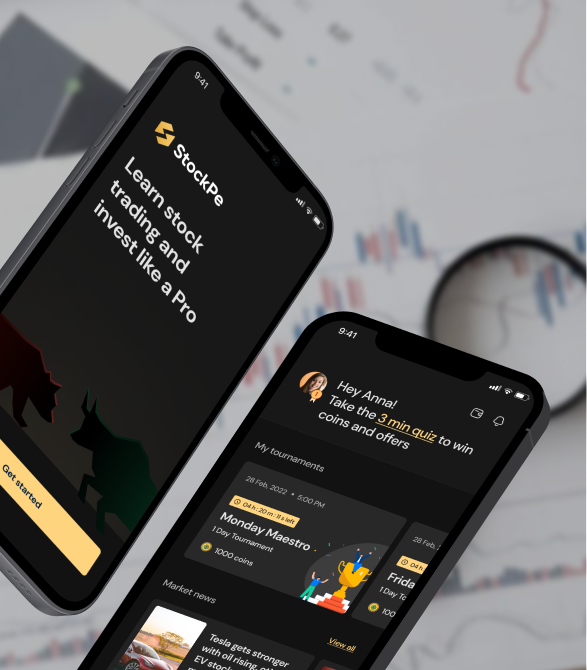
Mobile app UI UX design
StockPe: Stock market learning appDesign for a stock market learning platform that takes a gamified approach to make stock education simple and engaging.
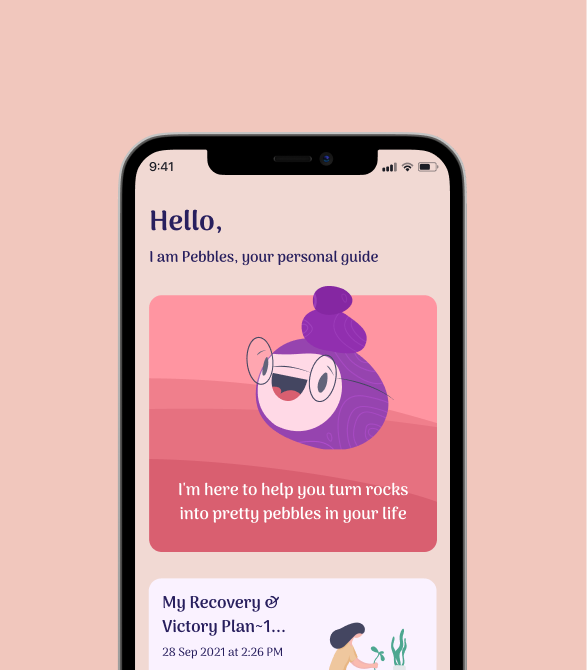
Mobile app UI UX design
PebblesDesign for a stock market learning platform that takes a gamified approach to make stock education simple and engaging.
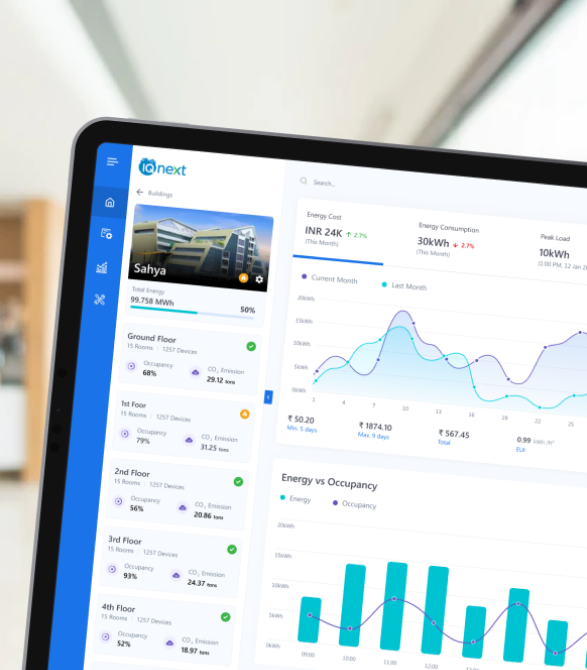
SaaS UI design
IQnextDesign for a stock market learning platform that takes a gamified approach to make stock education simple and engaging.
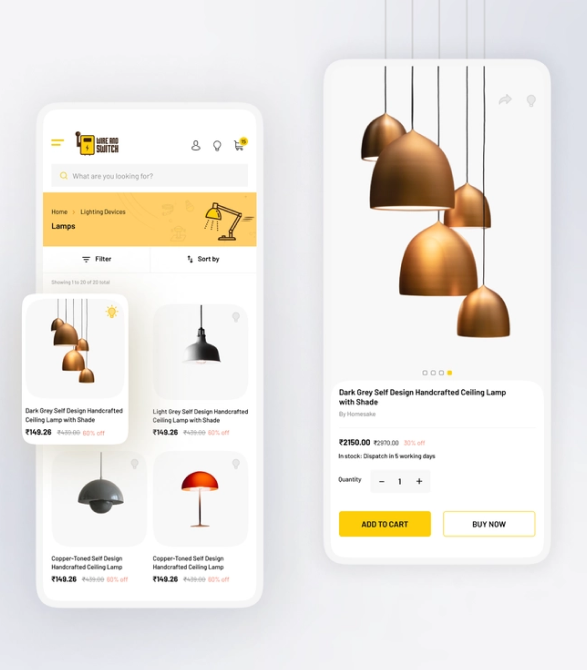
Mobile app UI UX design
PebblesDesign for a stock market learning platform that takes a gamified approach to make stock education simple and engaging.
FAQ on enterprise UX design
What business benefits can I get by using Aufait UX’s enterprise UI UX design services?
-
1.
Better employee productivity: With a well-crafted UI UX design, we make it easier for your employees to navigate and interact with the internal software, leading to improved efficiency and productivity.
-
2.
Increased sales: Our user-friendly designs are backed by extensive user research and strong UX audit, increasing the probability of conversions and sales.
-
3.
Reduced costs: Investing in enterprise software UX design at the beginning of a project helps you reduce the need for redesigns later on, which can be quite costly.
-
4.
Better brand image: With a professional UI UX, we help you create a consistent brand image and improve the credibility of businesses.
-
5.
Higher user retention: User satisfaction is a key criteria that drives our enterprise UI UX design. Our well-designed solutions encourage employees to perform their every day tasks effectively.
-
6.
Reduced learning curve: With our intuitive ux for enterprise applications, complex internal software are made simple, reducing the learning curve significantly.
How does enterprise UX design help improve employee productivity?
How can companies ensure they are getting the most out of their investment in Aufait UX’s enterprise UI UX design services?
How can I calculate the ROI for my investments in UX/UI services?
-
Cost-benefit analysis:Compare the costs of the UX/UI services (including design, development, and testing) to the benefits (such as increased productivity, improved user satisfaction, and reduced training and support costs) to analyze the net benefit of the investment.
-
Return on assets (ROA): Calculate the return on the UX/UI services as a percentage of the assets invested. To do this, divide the net benefit of the investment by the total cost of the services and multiply by 100.
-
Net present value (NPV): Calculate the present value of the future benefits of the UX/UI services, also considering the time value of money.
-
Key Performance Indicators (KPIs) measurements: Track the before and after of certain key performance indicators (KPI) such as task completion rate, error rate, and task completion time.
-
Cost of rework: Compare the cost and effort of UI UX services in the beginning of a project to the cost of rework after software implementation and analyze the total cost savings.
How long does it typically take to complete an enterprise UX project?
How can Aufait UX improve SAP user experience?
How can Aufait UX improve Sharepoint UX?
What are the steps of an enterprise UI UX design process?
-
1.
Understand the users and their needs: Research and gather information about the target users, their goals, and pain points.
-
2.
Define the problem and goals: Define the problem that needs to be solved and the goals that need to be achieved.
-
3.
Create a user flow: Develop a flowchart that outlines the steps a user will take to accomplish their goals.
-
4.
Design wireframes and mockups: Create low-fidelity visual representations of the user interface, such as wireframes and mockups.
-
5.
Conduct user testing: Test the wireframes and mockups with real users to gather feedback and make improvements.
-
6.
Design the final interface: Use feedback from user testing to create a high-fidelity design of the user interface.
-
7.
Develop and implement: Once the design is finalized, it can be handed over to the development team for implementation.
-
8.
Monitor and improve: Continuously monitor the performance of the UI/UX design and make improvements as needed.
What are the steps of an enterprise UI UX design process?
-
1.
User research and analysis: In this step, we conduct user research to understand the needs, goals, and pain points of the target audience. The research may be through surveys, interviews, or user testing.
-
2.
Define: The second step Define involves creating an information architecture, sitemap, user flows and wireframes to build a strong foundation for the design.
-
3.
UI design: Here, we design the visual elements of a user interface, such as the layout, color scheme, and typography.
-
4.
Interaction design: This step is about designing users’ interactions points with a product or service, including navigation, controls, and feedback.
-
5.
User testing: We test the enterprise app with users to identify any usability issues and gather feedback.
-
6.
Prototyping: We create a working prototype of a product or service to test the usability and gather feedback from the clients before final design.
-
7.
Front end development: We perform the front-end development to ensure that the design is translated precisely to corresponding code and it meets the needs of the users.
-
8.
Ongoing refinement: We constantly monitor the performance of the enterprise app, gather feedback and data, and make improvements to optimize user experience over time.
Are there any specific challenges associated with UX/UI design for enterprise applications?
-
1.
Complexity: Enterprise apps are characterized by high levels of complexity due to the large number of features and functionalities they have. Hence designing a simple and easy to use UI UX is often challenging.
-
2.
Consistency: Enterprise applications are often highly customized, and may need to be tailored to the specific needs of different departments or business units. This can make it difficult to design a user interface that is consistent and easy to use across the entire organization.
-
3.
Integration: Enterprise applications often need to be integrated with other systems and tools within the organization. Designing a seamless UI that supports this integration is a challenging task.
-
4.
Scalability: Scalability is an important criteria for enterprise apps owing to the large numbers of users and data associated with enterprises. Designing an interface that is fast and responsive is hence key for enterprise software.
-
5.
Stakeholders involvement: As multiple stakeholders are involved in enterprise apps and each may be having their own requirements and perspectives, designing a UX UI that meets the needs of all stakeholders is important.
-
6.
User's diversity: The users of enterprise software may have different levels of technical expertise and different goals. Hence accessibility and easy to use for everyone are must-haves for enterprise app design.
-
Though the challenges of enterprise UX design are many, the expert team at Aufait UX can help you overcome them and design an efficient app that meets all your needs.
What are the enterprise UI UX design services you offer?
-
Internal software design: Aufait UX's internal software design services include designing the UX and UI for enterprise apps, specific to the needs of the organization. We begin by conducting user research to understand the needs of the users, then create the information architecture, user flow and wireframes and finally design a user interface that is intuitive and easy to use.
-
UX audit: Aufait UX's UX audit service includes evaluating the current UX of the enterprise apps, identifying gaps, doing competitor analysis of other similar products and conducting research to understand the needs of the users and. At the end of the audit, we provide a report that includes recommendations for improving the user experience.
What is the cost for hiring Aufait UX for enterprise UI UX design service?
-
1.
Project Mode: The cost of the project is based on the scope, deliverables, and duration of the project. This model is recommended for new product developments from the ground-up and total product revamp projects.
-
2.
Time & Material based: The project cost is estimated based on the effort expended and the scope is determined by the customer. This model is suggested for projects where the scope cannot be finalized initially, and for maintenance projects that require ongoing effort for maintenance and enhancements. Most of our enterprise customers transition to the T&M model once the initial products are designed and implemented.
-
3.
Design Packages: We offer various packages to develop clickable and demonstrable prototypes, allowing our customers to quickly turn an idea into a tangible prototype. This is ideal for visualizing a product idea and presenting it to potential customers, stakeholders and investors.
What kind of information do you need for price estimation?
-
1.
Project scope: Tell us the scope of the project, including the specific features and functionality that need to be designed, as well as any constraints or limitations
-
2.
Deliverables: Define the specific deliverables that you expect from the project, such as wireframes, user flows, prototypes, and design system.
-
3.
Timeline: Provide an estimated timeline for the project, including important milestones and deadlines.
-
4.
Budget: Tell us an estimated budget for the project, including any constraints or limitations.
-
The T&M model is an ongoing partnership model in which our team takes part along with your sprint and in this model, the cost depends on the resource requirements.
How can we measure the success of our enterprise UX design?
-
1.
User satisfaction: Use surveys, interviews, or usability testing, to measure user satisfaction and gain insight into how well the design meets the needs of the users.
-
2.
Productivity: Track the time it takes for users to complete specific tasks, or measure the number of tasks completed in a given period of time to get insights on how enterprise UX design improves productivity.
-
3.
Error rate: Monitor the number of errors users make while using the software and compare it with previous error rate to get insights on effectiveness of enterprise UX design.
-
4.
ROI: To measure ROI, compare the costs associated with the design project to the benefits such as increased productivity, improved user satisfaction, and reduced training and support costs.
What is the role of a Design System in enterprise UX ?
-
1.
Consistency: A design system helps to ensure consistency across all of an organization's digital products, by providing a set of guidelines and patterns for design, interaction, and branding. This improves ease of navigation and builds a consistent experience throughout the design.
-
2.
Reusability: With a set of reusable components, such as buttons, forms, and navigation elements that can be used across different products, design systems support reusability. As a result development and maintenance effort and cost can be reduced.
-
3.
Scalability: A design system supports an organization's growth by supporting scalability and evolving to meet the organizational changes over time.
-
4.
Accessibility: With accessibility guidelines and components, design systems ensure that digital products are accessible for all users, including those with disabilities.
-
4.
Brand alignment: A design system aligns the organization's digital products with the company's brand, vision and design guidelines.
-
.5
Unified communication: A design system provides a unified language to communicate and collaborate improving the understanding among different teams and stakeholders.
How to handle security and compliance requirements in enterprise UX design?
-
1.
Implementing secure authentication and access controls to limit who can access sensitive information.
-
2.
Encrypting data in transit and at rest to protect it from unauthorized access.
-
3.
Regularly update the system and its components to ensure that the latest security patches and fixes are applied.
-
4.
Providing user training and education on security best practices to ensure that employees are aware of the importance of protecting sensitive information and know how to do so.
-
5.
Incorporating compliance requirements into the design process, such as making sure that the user interface meets accessibility standards and that data is handled in accordance with industry regulations.
-
.6
Regularly auditing the system to ensure that it remains compliant with security and regulatory requirements.
-
.7
Use secure design patterns and guidelines, such as the OWASP Top 10, to ensure that the design is secure and compliant
What are the steps of an enterprise UI UX design process?
-
1.
User research and analysis: In this step, we conduct user research to understand the needs, goals, and pain points of the target audience. The research may be through surveys, interviews, or user testing.
-
2.
Define: The second step Define involves creating an information architecture, sitemap, user flows and wireframes to build a strong foundation for the design.
-
3.
UI design: Here, we design the visual elements of a user interface, such as the layout, color scheme, and typography.
-
4.
Interaction design: This step is about designing users’ interactions points with a product or service, including navigation, controls, and feedback.
-
5.
User testing: We test the enterprise app with users to identify any usability issues and gather feedback.
-
6.
Prototyping: We create a working prototype of a product or service to test the usability and gather feedback from the clients before final design.
-
7.
Front end development: We perform the front-end development to ensure that the design is translated precisely to corresponding code and it meets the needs of the users.
-
8.
Ongoing refinement: We constantly monitor the performance of the enterprise app, gather feedback and data, and make improvements to optimize user experience over time.
















